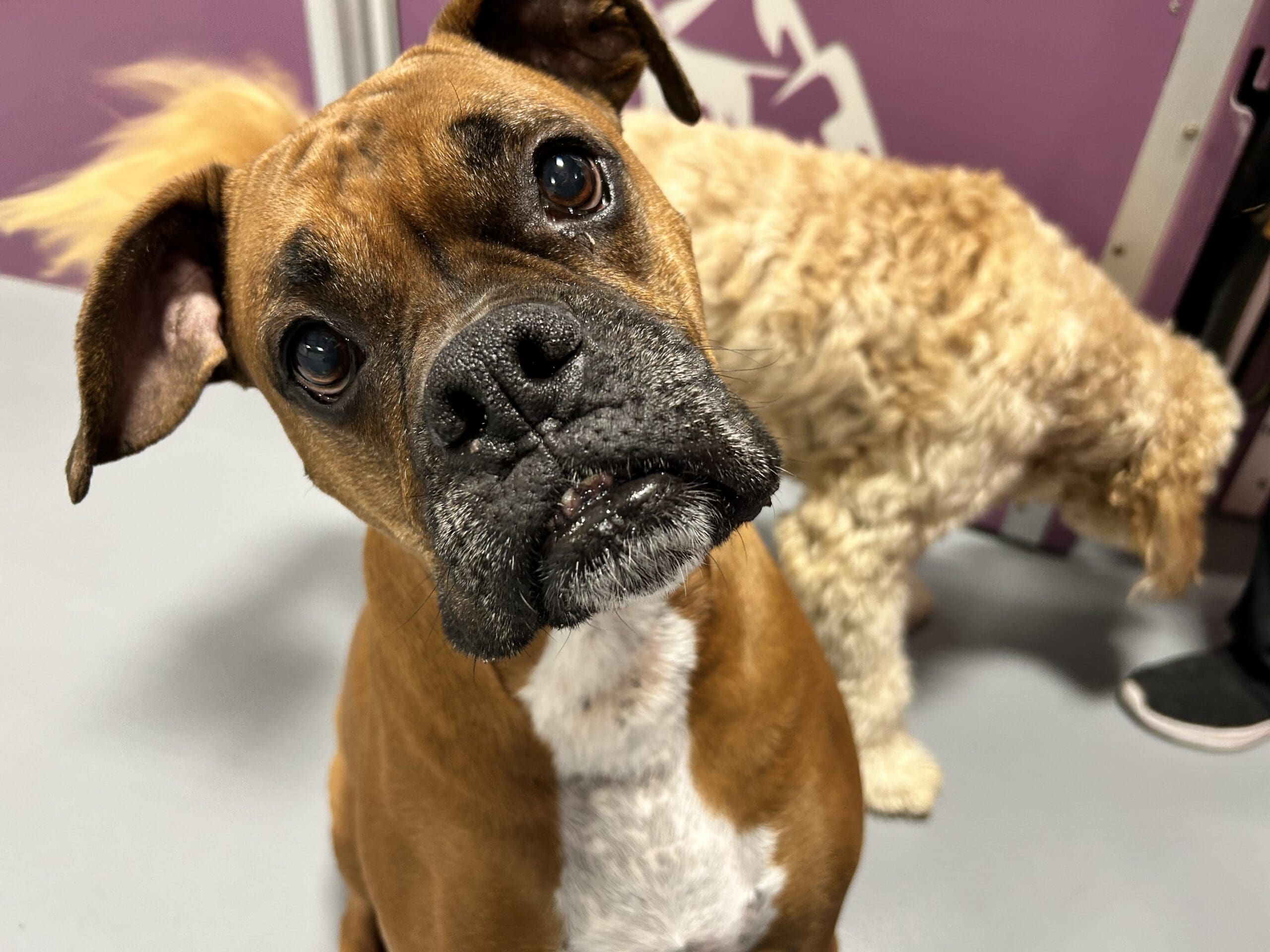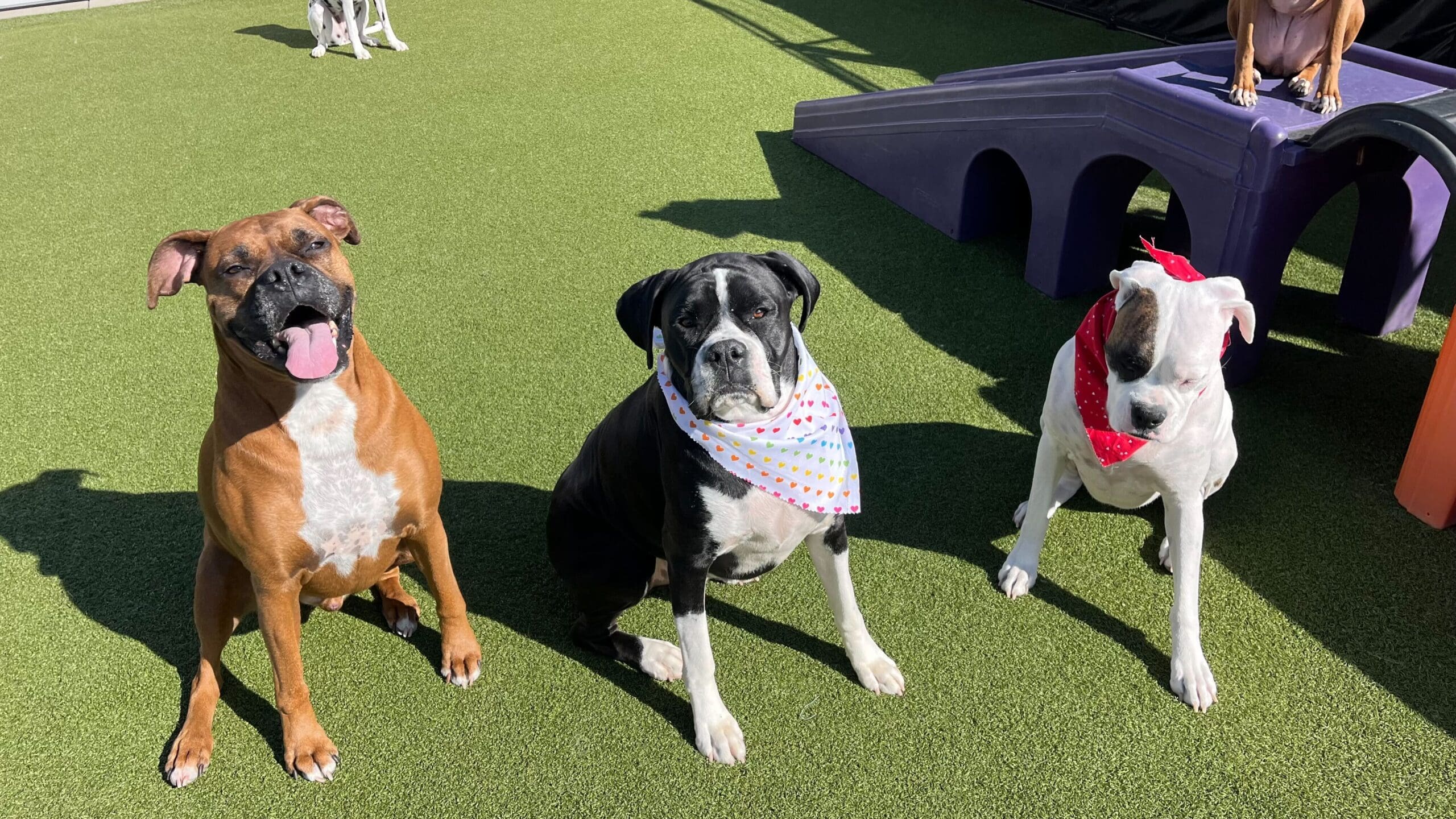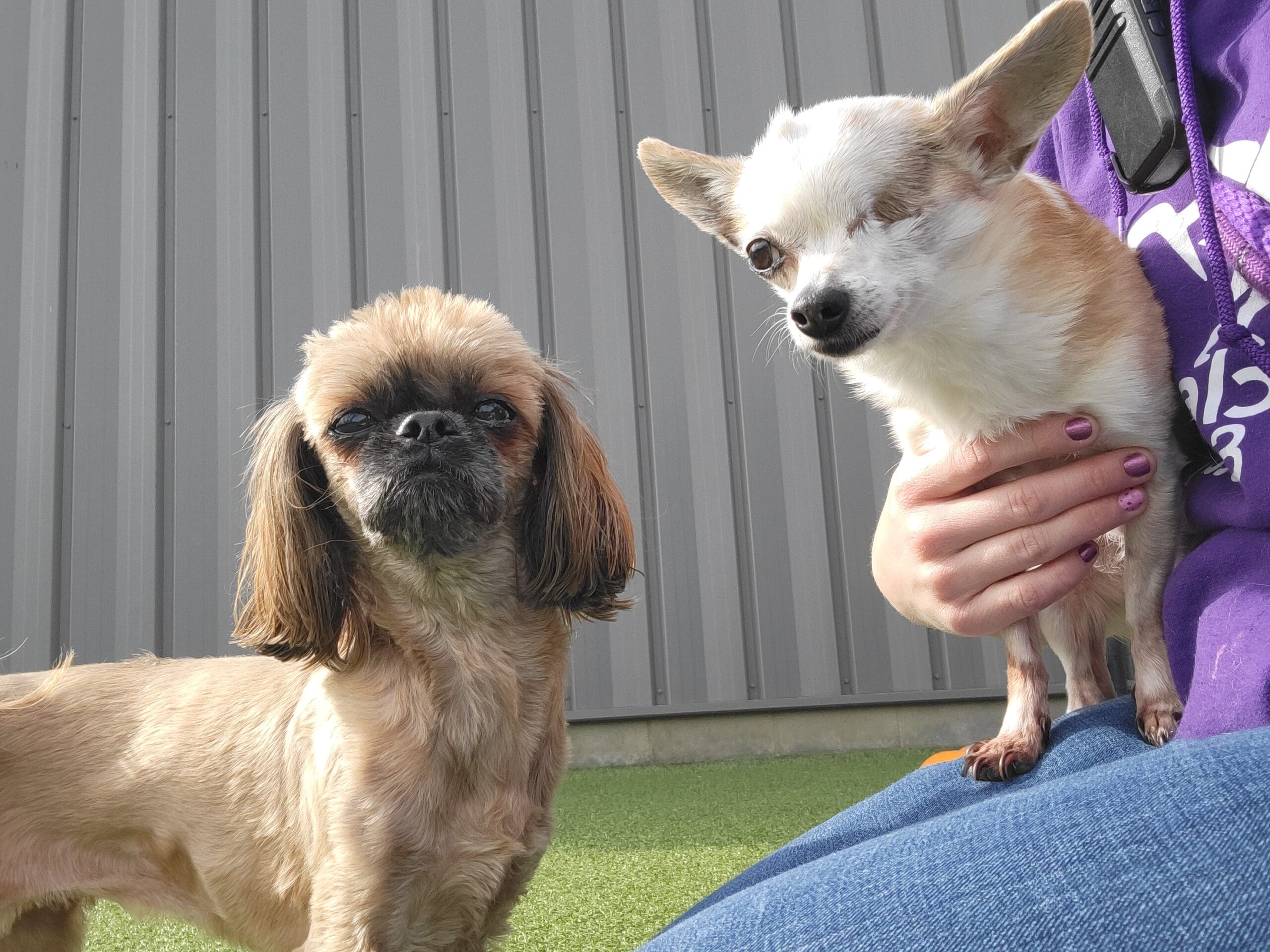
Mental Stimulation for Dogs
Mental stimulation for dogs is exercising the brain through thinking, learning, and experiencing.
It can be satisfied in many ways, including training, exercise, toys, games, and socialization.
It is essential to provide dogs with enrichment throughout their lifespan from puppyhood to senior citizenship to provide constructive outlets for anxiety and/or boredom.
The benefits of engaging your dog through enrichment include:
- Decreasing unwanted or destructive behaviors
- Providing better overall happiness and contentment
- Increasing your bond
- As a bonus, regular mental stimulation has been found to fight off dementia, anxiety, and depression.
Dogs need different activities based on breed, age, and temperament.
Training is an excellent form of mental stimulation and can be done with young pups starting as early as eight weeks old. Popular types of training include
- Basic and advanced Command Training,
- Good Citizenship courses,
- Trick training,
- And More!
Classes can be group classes or private classes. Training with your dog elevates the bond between you and your dog and boosts your dog’s confidence levels.

Any physical exercise increases mental stimulation. Many dogs love to socialize with other dogs in doggy daycare or dog parks. Some dogs favor interacting with their human pals, preferring activities such as playing fetch with a ball or frisbee, tug of war, or hide and seek. Some dogs prefer going for a walk or run.
Many herding breed dogs, like Australian Shepherds, German Shepherds, Border Collies, and Heelers, enjoy playing with a herding ball, which stimulates their natural tendency to gather and direct.
Dog Puzzles are another way to entertain your pup. Breeds that are known to love nose work, i.e. Beagles, Labrador Retrievers, Bassett Hounds, Blood Hounds, English Springers, and other working dogs, usually enjoy puzzle toys where they can engage their nose to find items or food that are hidden from view. There are many varieties of puzzles to keep your dog entertained for hours.
- Snuffle Mats are a puzzle toy that encourages pups to find tiny, tasty morsels hidden in a thick mat.
- Other puzzle toys have compartments that dogs must figure out how to open to get their treat.
- Some puzzle toys, like treat balls, slowly dispense small treats with movement, providing them with physical and mental exercise.
- Filling a hollow rubberized toy such as a Kong with peanut butter is a satisfying way to engage the brain.
On a sidebar, discretion should be used when determining the frequency of treat-rewarding puzzle toys to prevent eating too many non-nutrient-rich calories and weight gain.
Chew Toys come in many different styles, but most provide an outstanding outlet for the natural desire of a dog to chew. Chewing helps alleviate anxiety and frustration. It also exercises the jaw muscles and cleans the teeth. Chew toys include those stuffed with fluff and squeakers, bull horns, deer antlers, rubber figures, and edible chews like Yak sticks or bully sticks.
Playing inside games with your dog is an enrichment activity that can help entertain your pup on cold or inclement days. Examples include shell games, sniffing games, tossing games, and finding games. You can look up several ideas for homemade do-it-yourself games on the American Kennel Association website https://www.akc.org/expert-advice/training/indoor-scent-games-for-dogs/
Some dogs enjoy mental stimulation from outside exercise-based activities such as dock diving, agility courses, splash pads, and wading pools.

Enrichment comes in many forms that meet most dogs’ needs. Regardless of the breed or age of your pup, experts agree that all dogs need some form of mental stimulation for happy, healthy, well-adjusted lives. For specific recommendations based on your dog’s age, breed and temperament, ask a pet professional.
